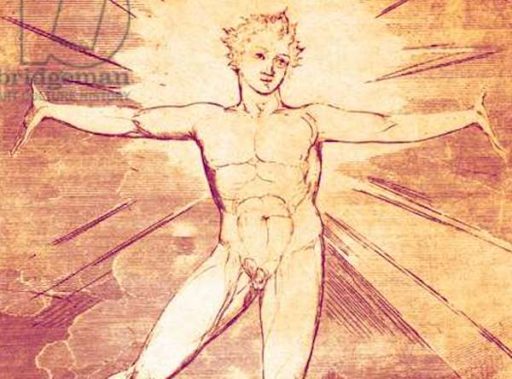I like to memorize poems—to have them in my head to recite while I’m exercising on my indoor bike or taking a brisk walk in my neighborhood. Not surprisingly, I find that short poems with rhyming are the easiest to memorize. So sonnets are ideal.
Take Mark Jarman’s epilogue to his collection Unholy Sonnets (2000). (Jarman’s title is a joke: there’s nothing “unholy” about these poems. He’s of course playing off of John Donne’s title Holy Sonnets—perhaps to suggest that in today’s secularized world, “holiness” is a bit suspect. As a Christian poet, Jarman knows that he’s writing for a culture where God—and poetry—must surprise and startle in order to be believed.)
The first surprise of the untitled sonnet beginning “Today is fresh, and yesterday is stale” is how colloquial it is. Jarman here gives us lines so disarmingly comfortable that we scarcely notice that we’re in a sonnet at all. Here’s the first quatrain:
Today is fresh, and yesterday is stale. Today is fast, and yesterday is slow. Today is yes, and yesterday is no. Today is news, and yesterday’s a tale.
The series of opposites making up this quatrain is beguilingly simple, as charming as the word “tale” with which the quatrain ends. We probably aren’t even aware, as we swing easily through the quatrain, of how today’s part of each line (the first two beats) names the more positive term of the opposition, and yesterday’s part (the last three beats) the more negative. But the pattern unconsciously shapes our reading as we move unsuspectingly into the second quatrain.
The grave is empty. Last night it was full. The glorious means of death was once a shame. Someone is God who had a common name That you might give a child or animal.
I say “unsuspectingly” because we’re immediately thrust here into another realm. With today’s place taken by the empty grave, we find ourselves—to our utter surprise—at Easter. Today’s fresh, fast, yes, news turns out to be the Resurrection! And with the Resurrection comes, in this quatrain, a transformative twist to the oppositions. The positive term now names the divine force that transforms its opposite in a way that only God can do: with the full grave emptied, the shame of death becomes “glorious,” and the most common “someone” turns out to be Jesus.
With the third quatrain, we’re wholly into the transformed world of the Resurrection, so the oppositions cease:
It happens overnight. The world is changed. The bottles in the cellar all decant. The stars sign the new cosmos at a slant. And everybody’s plans are rearranged.
Instead of oppositions, we get, in these four lines, four restatements of the Resurrection’s effect. But what a different sort of statement each is. First there is a pairing of clichés: “It happens overnight. The world is changed.” Seeing Easter put in such everyday terms makes me do a doubletake; but then I laugh, yes, Easter’s resurrection is indeed an overnight happening which changed the world as no other event could possibly do.
To help us picture this change, Jarman gives us two images for it, images that make me pause because they’re wildly unlike anything I’ve ever seen. “The bottles in the cellar all decant”: I picture a wine cellar’s bottles all de-corking themselves, cartoon-like, and tipping themselves to pour their contents onto the floor. (I also can’t help recalling the gospel’s new wine that bursts the old wineskins.) Then in the next line we’re swept up to the skies, where “the stars sign the new cosmos at a slant.” Punning with “sign” as both symbol and signature, the poet shows us the heavens angled anew (tipsy with joy?) in response to the glorious event. I can’t fully get my mind around either of these images: they delight and intrigue. But that’s precisely the poet’s purpose here, I think: to show us the cosmos from cellar to sky thrown off-balance by the Resurrection in ways that we’d need a lifetime and more to “get.”
Yet the language of these wild lines is as common and comfortable as all the other language of the poem. God has transformed the common names for things by entering them, dying through them, and rising to new life. So we move smoothly into the quatrain’s last line, the teasingly bland “And everybody’s plans are rearranged.” Rhyming “changed” with “rearranged” links the quatrain’s two blatantly idiomatic lines, which have become startlingly filled with unexpected color and life by the rhymed “decanting” and “slanting” lines in between.
So we come to the sonnet’s closing couplet:
Today we meet our maker, in a flash That turns the ash of yesterday to flesh.
Two familiar idioms greet us first—meeting our maker and in a flash—so that we seem to be on comfortable ground. But then the final line bursts open all our familiarity: it’s a flash “that turns the ash of yesterday to flesh.” We can’t make immediate sense of these words, yet we’re dazzled by their rapid-fire transformations of sound: flash to ash to flesh. Then we wonder: what can it mean that yesterday’s ash becomes flesh in today’s flash of meeting our maker?
What can it mean? Our rational minds always push for this kind of discursive understanding. But good poetry won’t satisfy us in this merely discursive way. Instead, it makes evocative associations. Yesterday’s “ash” links back to the slow, stale, shame of yesterday’s dead world, a “no” world not truly real, only a tale, because the grave was still full; Christ was not yet risen. Today is the mind-bending reality. Today, in a judgment that turns inside out our fearful expectations of meeting our maker, the flesh which we’d thought of as our human burden is redeemed in a flash that puts it—to our astonishment—in the poem’s final, positive place: flesh now as “fresh” as the today that opens the poem.
A traditional sonnet’s final couplet brings closure. But how can there ever be closure (the poem implies) in the Resurrection’s today? That, I think, is why Jarman rhymes his final word “flesh” with the “fresh” of the poem’s opening phrase. The rhyme cycles us back into the whole poem again…and again.
God took on human form, with all its limitations, in order to break the form open in unimaginable sweetness. Jarman takes on the sonnet form to help us begin to imagine this unimaginable. Entering into not only the set form of the sonnet but also the most colloquial, even clichéd, forms of speech, the poet brings us through them into the explosively opening wonder which is Easter.
Peggy Rosenthal has a PhD in English Literature. Her first published book was Words and Values, a close reading of popular language. Since then she has published widely on the spirituality of poetry, in periodicals such as America, The Christian Century, and Image, and in books that can be found here.





